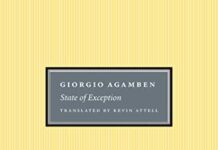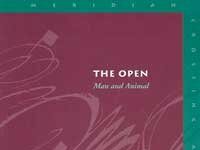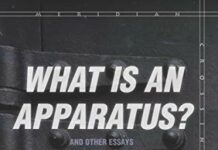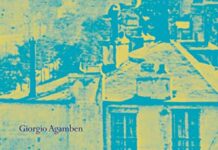
Ebook Info
- Published:
- Number of pages:
- Format: EPUB
- File Size: 1.70 MB
- Authors: Giorgio Agamben
Description
What is a rule, if it appears to become confused with life? And what is a human life, if, in every one of its gestures, of its words, and of its silences, it cannot be distinguished from the rule?It is to these questions that Agamben’s new book turns by means of an impassioned reading of the fascinating and massive phenomenon of Western monasticism from Pachomius to St. Francis. The book reconstructs in detail the life of the monks with their obsessive attention to temporal articulation and to the Rule, to ascetic techniques and to liturgy. But Agamben’s thesis is that the true novelty of monasticism lies not in the confusion between life and norm, but in the discovery of a new dimension, in which “life” as such, perhaps for the first time, is affirmed in its autonomy, and in which the claim of the “highest poverty” and “use” challenges the law in ways that we must still grapple with today.How can we think a form-of-life, that is, a human life released from the grip of law, and a use of bodies and of the world that never becomes an appropriation? How can we think life as something not subject to ownership but only for common use?
User’s Reviews
Reviews from Amazon users which were colected at the time this book was published on the website:
⭐Domination of rule over life, this is the paradigm of the capitalistic forms of live that surround us today, but is there a way to discover the excess of life over rule? What is life when it is unregulatable, unmanageable? Agamben argues that thinking on monastic’s obsession with rules might show us a way to change our lives.
⭐This is not a romantic book about medieval monasticism, nor is it a scathing critique. It is intended for those with scholarly interests in the subject of the development of monastic life. Be prepared to parse Latin. While a better written and translated volume than many books on this subject, it is not a light read.
⭐Among the many questions that have animated Giorgio Agamben’s now-hulking ‘Homo Sacer’ series through the years, one in particular stands out: what is the relation between law and life? Or more precisely, how the relation between each evolved though the ages, from the annals of ancient Greece to the horrors of the modern concentration camp? In ‘The Highest Poverty’, Agamben’s project makes a pit stop amongst the monasteries and monks of medieval Europe, finding within the monastic orders a privileged prism through which to investigate the ever changing articulation between life and law. Where the early works (
⭐,
⭐) investigated the liminal situation in which law maintained only the most tenuous (if nonetheless devastating) relation to life, ‘The Highest Poverty’ turns its attention instead to the monastic world in which life – the life of the monk – becomes indistinguishable from – not law – but the ‘rule’. Indeed, the monastic attempt to distinguish between rule and law – and thus define a life outside of the strictures of the law – constitute a singular moment in the history of West which Agamben’s book aims to detail.But what then is a rule that is a not law? The answer lies in the rule’s ability to constitute, rather than merely regulate, the very life it implicates. Which is to say that unlike laws which, belonging to the order of a generality which then applies to an already existing, particular case, rules produce and are generative of the very lives which attempt to ‘live in accordance’ with them. Marking the difference between the priest and the monk in terms of laws and rules respectively, Agamben thus notes that while the sacraments of an unworthy priest remain valid by virtue of his office rather than his person, an unworthy monk is simply not a monk at all. Unlike the priest’s, the monk life thus totally coincides with the rules by which he lives (
⭐, Agamben’s follow-up to ‘The Highest Poverty’, chases this line of thought through by tracing the genealogy of ‘Office’ – another worthy read in its own right). Calling into question then, the traditional dichotomies between life and rule, generality and particularity, the boundary-crossing cenobitic life reaches its apogee in what Agamben, following the Monastic fathers, calls the ‘form-of-life’ from which the book takes its subtitle.Ultimately, it’s in the Franciscan order in particular that Agamben sees the highest point of indistinciton between life and rule, an indistinction that results in a new and unprecedented theory of property and use; just as the form-of-life is defined by separation from the juridical sphere, so too is the Franciscan use of things defined by its renunciation of ownership and legal possession. The ‘highest poverty’ then, amounts to just this attempt to delineate a ‘common use of things’, not unlike the way in which “air and sunlight are common to all”. Despite its radicality as a doctrine however, Agamben notes that the Franciscans were nonetheless unable, in the last instance, to give positive content to this manner of use, one which at the limit was only ever able to articulate itself negatively with respect to law (as with Hugh of Digne’s paradoxical “right to have no rights”). This thwarted messianic movement nonetheless remains instructive for Agamben, who mines it in order to expose a site of thought and practice whose contours, today more than ever, demand to be reckoned with (a reckoning Agamben promises to properly undertake in the last volume of the Homo Sacer series – the yet untranslated ‘The Use of Bodies’).
⭐A bit rough going, but very insightful.
⭐its cool
⭐perfect
⭐Giorgio Agamben has come to be known in the US through his work on Homo Sacer. In that work (Homo Sacer, Remnants of Auschwitz, and State of Exception), Agamben undertook a scathing critique of law, and the perverse core of liberal democracy that expelled human life from the jursidiction of the law while keeping that life somehow within the boundaries of legality. Through this paradox, human life becomes homo sacer, a life that can be killed but not sacrified.In that work on Homo Sacer, it was easy to read Agamben as a harsh critic of law and form, and a privileger of life outside of any kind of form. Texts like “What is an apparatus,” seemed to only cement this impression.In The Highest Poverty, which seems to be part of another line of flight, including The Church and the Kingdom and The Kingdom and the Glory, Agamben approaches this central problematic, but from the other direction. Instead of approaching the problem of law from the point of view of life, he approaches it from the point of view of form–or, more precisely, a form-of-life, that is, a life that is inseparable from form. Such an approach makes this new work (whatever one feels about Agamben’s interest in Christianity) indispensible for understanding the entire Homo Sacer problematic. And if one approaches Homo Sacer without simultaneously approaching The Higest Poverty, then one will be half-educated, at best.The Highest Poverty oribts around two principle concepts. First is “the rule,” which Agamben seeks to specify in contrast to law. This culminates in a short reading of the Apostle Paul’s dialectic of law and sin, which will be illuminating for those who have read The Time That Remains. Second is “use,” which Agamben also seeks to specify in opposition to something else, this time ownership. This problematic of use and owndership illuminates the conflict between the Franciscans and the Church, thereby revealing a strain of Christianity outside the institutions of Church and law that may light up a path of emancipatory practice for us today.
⭐This book expands upon a page-long section in his earlier The Signature of All Things, describing what a ‘form-of-life’ meant to the Franciscans. It also develops ideas in his The Time That Remains, which explained St Paul’s view that, under messianic conditions, ‘use’ need not imply ownership. There, he related this to the Franciscan ‘form-of-life’ that is indifferent to things of the world. This was the Franciscan’s ‘highest poverty’ (living free, like the birds and the lilies).In The Signature of All Things Agamben described a ‘form-of-life’ as living according to (or up to) the exemplary life of a hero or founder figure. Imitating an honoured other as a way of shaping and guiding our life choices. This is not living according to a legalistic rule or set of principles. What we respect is an individual, a ‘living law’. The Franciscan wish to be outside the law, living communally without norms or juridical status, is an example of ‘bare life’ (he refers to the Greek word ‘zoē’), free of the legal-state nexus that constitutes us as registered life (the contrasting Greek word is ‘bios’). So, the question will be, can the Franciscans make their a-legal existence stick? What do you think?The Franciscan claim that renouncing possessions put them outside the law did not impress the Church’s experts in canon law. St Francis had tried to avoid the whole issue, but once the question did get asked then minds turned to grapple with it (i.e. the fix was in). The question inaugurated rapid problematisation and the proliferation of distinctions and categories through which lawyers (on both sides) disputed whether this was possible or how it might be possible. Discussions need concepts and distinctions, so even in the discussion phase (from around 1220 to 1280) the Franciscans had already conceded the fateful point, accepting that distinctions could apply to that which was meant to be beyond the law.The Franciscans wanted to live like the birds and the lilies – consuming what they needed without the law of possession and exchange. They tried to justify their ‘pure use’ in terms of natural law (or natural necessity as a kind of ‘state of exception’). They claimed that their ‘use’ of objects did not imply ownership. It’s odd that Agamben doesn’t mention St Francis’s analogy of this form-of-life to the birds and the lilies – it would have helped.But the canon lawyers stated that St Francis may have said he renounced possessions, but such as state was not possible for humans. Even at the level of their ‘highest poverty’ ownership is implicit in consumables – if you eat an apple it surely can’t still belong to someone else? This culminated in Pope John XXII’s dismissal of the Franciscan case.Having read Agamben’s book The Time That Remains, I could follow his point a bit better – in that book he discussed St Paul’s ‘messianic’ notion of ‘using without possessing’ as an indifference to things. He adds on to that discussion a 2-page summary of the Franciscan view of ‘use’ as opposed to ‘possession’. I subsequently read Profanations and there is a much clearer 1-page statement about what John XXII said and why. In both books Marx’s complaint about exchange value muscling out use value is closer to the surface. Agamben is identifying John XXII’s judgement as a key moment in the history of the ‘society of the spectacle’ (and the decline of authentic human existence).I can see Agamben wants the Franciscan path of living without rule, their ‘messianic’ form-of-life freed from ideas of ownership. He likes their sociable communalism and their desire to be untouched by the law (not outside it but incommensurable with it). In his discussion of ‘use’ I imagine Agamben also wants there to be echoes of Marx’s contrasts between use-value (good) and exchange value (bad).As fairly often with Agamben, I did want him to lay his cards on the table a bit more. It’s a massively deep dive into complex and esoteric subjects and it would have helped for him to lay out the project’s purpose and implications a bit more clearly.
⭐A fascinating (if difficult) read. A great trawl of virtually every Christian monastic tradition, drawing insightful conclusions from that eide trawl.
⭐Agamben says simple and often known things in a terribly complicated way. Battle on, it’s worth the effort!
⭐Brand new book, thank you!
Keywords
Free Download The Highest Poverty: Monastic Rules and Form-of-Life (Meridian: Crossing Aesthetics) 1st Edition in EPUB format
The Highest Poverty: Monastic Rules and Form-of-Life (Meridian: Crossing Aesthetics) 1st Edition EPUB Free Download
Download The Highest Poverty: Monastic Rules and Form-of-Life (Meridian: Crossing Aesthetics) 1st Edition EPUB Free
The Highest Poverty: Monastic Rules and Form-of-Life (Meridian: Crossing Aesthetics) 1st Edition EPUB Free Download
Download The Highest Poverty: Monastic Rules and Form-of-Life (Meridian: Crossing Aesthetics) 1st Edition EPUB
Free Download Ebook The Highest Poverty: Monastic Rules and Form-of-Life (Meridian: Crossing Aesthetics) 1st Edition




